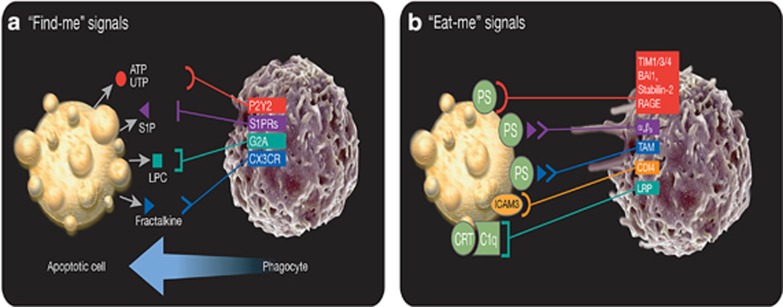Figure 1.
The recruitment of phagocytes and recognition of dying cells by phagocytes. (a) Dying cells release ‘find-me' signals, such as ATP, UTP, S1P, lysophosphatidylcholine (LPC), or fractalkine, that recruit phagocytes to sites of cell death. Phagocytes sense these ‘find-me' signals via cognate receptors (P2Y2, S1PRs, G2A, and CXCR3, respectively). (b) Phagocytes express a variety of receptors and bridging molecules that recognize and engage dying cells via ‘eat-me' signals exposed on apoptotic cell surfaces. The most common ‘eat-me' signal, phosphatidylserine (PtdSer or PS), engages the PtdSer-specific receptors, TIM1, TIM3, TIM4, BAI1, stabilin-2, and RAGE, as well as the PS-specific bridging molecules MFG-E8, Gas6, and protein S. These bridging molecules engage other surface engulfment receptors (αvβ3 or TAM) to facilitate uptake. Other ‘eat-me' signals, such as calreticulin (CRT) and ICAM3, exist and mediate recognition and engulfment via the receptors LRP (via C1q) and CD14, respectively

